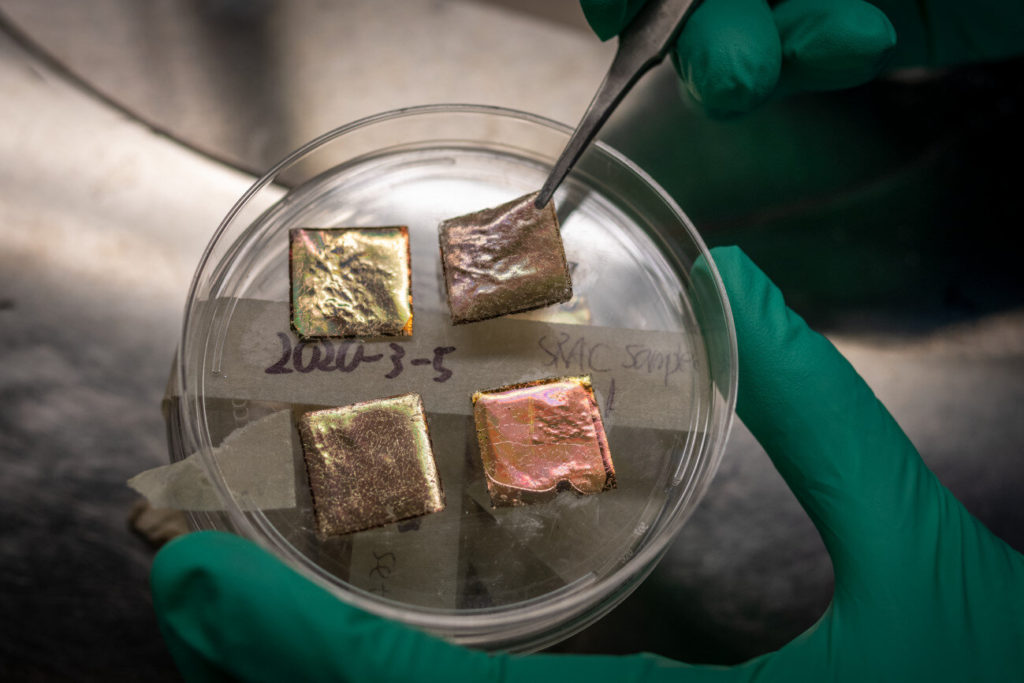
Scientists have developed an all-season smart-roof coating that keeps homes warm during the winter and cool during the summer—without consuming natural gas or electricity. Research findings reported in the Dec...
Read More

Scientists have developed an all-season smart-roof coating that keeps homes warm during the winter and cool during the summer—without consuming natural gas or electricity. Research findings reported in the Dec...
Read More
Chang-Beom Eom, right, and Mark Rzchowski inspect a materials growth chamber. The researchers have made a new material that can be switched from electrical conductor to insulator. Credit: UW-Madison photo by Sam Million-Weaver
University of Wisconsin-Madison researchers have made a material that can transition from an electricity-transmitting metal to a nonconducting insulating material without changing its atomic structure. “This is quite an exciting discovery,” says Chang-Beom Eom, professor of materials science and engineering. “We’ve found a new method of electronic switching.”
The new material could lay the groundwork for ultrafast electronic devices. Metals like copper or silver conduct electricity, whereas insulators like rubber or glass do not allow current to flow...
Read More
Vanadium dioxide (VO2) nanobeams synthesized by Berkeley researchers show exotic electrical and thermal properties. In this false-color scanning electron microscopy image, thermal conductivity was measured by transporting heat from the suspended heat source pad (red) to the sensing pad (blue). The pads are bridged by a VO2 nanobeam. Credit: Junqiao Wu/Berkeley Lab
The findings of vanadium dioxide properties could lead to a wide range of applications, such as thermoelectric systems that convert waste heat from engines and appliances into electricity, window coatings. For most metals, the relationship between electrical and thermal conductivity is governed by the Wiedemann-Franz Law. Simply put, the law states that good conductors of electricity are also good conductors of heat...
Read More
This is an infrared image of metadevice composed of vanadium dioxide with gold patterned mesh. (Top) Device without any electric current showing the PSU cut from the pattern and reflective. (Middle) Device with 2.03 amps
An electric current will not only heat a hybrid metamaterial, but will also trigger it to change state and fade into the background like a chameleon in what may be the proof-of-concept of the first controllable metamaterial device, or metadevice. “Previous metamaterials work focused mainly on cloaking objects so they were invisible in the radio frequency or other specific frequencies,” said Douglas H. Werner, John L. and Genevieve H. McCain Chair Professor of electrical engineering, Penn State...
Read More
Recent Comments